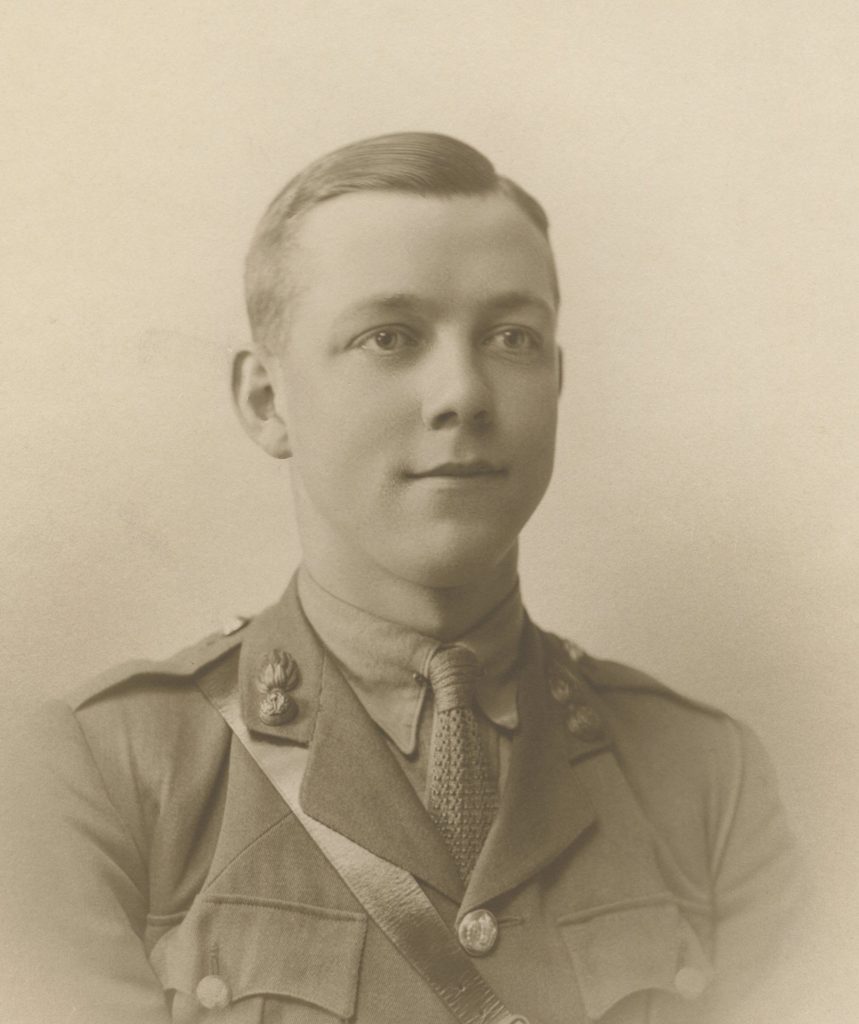Great War Dundee
This is Dundee's story of those that served in the First World War, and of the people left at home
David Kilgour
Military Information
- Date of enlistment: 1915
- Place of enlistment:
- Service no:
- Rank: Second Lieutenant
- Service Occupation:
- Awards:
- Regiment/Service: Royal Scots Fusiliers
- Unit/Ship: 1st Battalion
Personal Information
- Date of Birth: 01.05.1896
- Place of Birth: Dundee
- Address: 49 Taylors Lane, Dundee
- Occupation: Managing Director, J & D Wilkie, Kirriemuir
- Mother:
Catherine Kilgour
- Father:
David Kilgour
- Siblings:
Robert & twin brothers, Ernest & Douglas
- Spouse:
Alice Kilgour (nee Stewart)
- Children:
- Age at Death: 70
- Date of Death: 10.09.1966
- Place of Death: Kirriemuir
- Burial Country:
- Cemetery:
More about David Kilgour
David Kilgour’s Battle of the Drocourt-Quéant Line – 31/08/1918
David Kilgour (born May 1st,1896 in Dundee, Scotland) enlisted in the WWI Army Cyclist Corps in 1915 when he was 18 years old. He was the first in his family to enlist although he was not eldest of David and Catherine Kilgour’s four sons – his elder brother Robert was disqualified from serving because he was blind and his younger twin brothers enlisted in the Air Force in 1918.
Dave’s Attestation Papers are missing so the details as to which Cyclist Corp he served with, are no longer available.
The original first volunteer cyclist units had been organized into the Territorial Force in 1908, and it was made up of nine battalions of cyclists. On the outbreak of the First World War, the cyclist battalions were employed on Coastal Defences in the United Kingdom. Their role was considered to be so important that, initially, none of them were sent overseas. In 1915, the Army Cyclist Corps was founded to encompass these battalions. Most units of the Corps served out their time in the United Kingdom or provided replacement drafts to infantry battalions.
In November 1917, David became one of those who was drafted or ‘gazetted’ to the 1st Battalion of the Royal Scots Fusiliers, 3rd Division, 8th Infantry Brigade. This was the same Battalion that his future bride’s brother – William Stewart – had served with while they were originally part of the 9th Brigade in 1916. After William’s death during the Battle of St. Eloi Craters in 1916, the Battalion had continued to be involved in major battles in France, like the Somme, Arras and Ypres and had just fought during the Second Battle of the Somme – Battle of Albert in August 1918.
On August 23, 1918 at just 22 years old, Dave was sent to France to join the Royal Scots Fusiliers. He arrived with seven other replacement officers at the trenches at Hamelincourt (just south of Arras) on August 31st. His name and rank of 2nd Lieutenant are recorded in the Battalion War Diaries.
By 11:30 pm the following day, Dave’s Battalion is moving forward in the darkness, to the 1st assembly position for the next offensive. This assembly point was in captured German trenches taken so recently that they were still recorded on the August 18, 1918 maps as German. It was noted in the war Diaries, “During the assembly the enemy was very active with his machine guns and artillery, due to the attack by the flank Corps at 5:00 am. We suffered a few casualties.”.
What an incredible shock all this must have been for these new officers after less than 24 hours at the front.
At 5:30 am – zero hour – the creeping barrage began, and the companies moved forward. Very quickly there was difficulties with the flat landscape that provided no shelter and strong belts of wire to be passed through. They suffered heavy losses – especially officers – eleven killed or wounded right away. Perhaps due to this lack of leadership, the line of advance veered off course and after crossing a Sunken road and railway and advancing towards the enemy trench – McCauley Avenue – were met by a “murderous fire from machine guns…”
Problems continued through the day with the creeping barrage at times moving too fast ahead of the advance, or being fired on by their own barrage, not being able to get messages to Battalion H.Q. because the orderlies were wounded or killed and the lack of the planned tank support. By 9 am on the morning of September 2, the Battalion had retreated to Mory Copse and sometime during the fray David Kilgour had been shot in the jaw.
Although the Battalion took about 100 enemy prisoners and killed many others that day, but with ultimately no gains and no obtaining of their objective of Quéant, the Battalion losses for just that day totalled 195 combined officers and other ranks killed, wounded or missing was devastating high. Of the eight new officers who arrived on August 31, two were killed and four were wounded including Dave, within two days of arriving at the front.
David was sent back to recover in hospital in London. By April of 1919 he had recovered sufficiently to travel out to Calcutta for Jute business. He married Alice Stewart in 1926 in Dundee, Scotland. He became the Managing Director at J&D Wilkie, , spinners and weavers of Jute cloth in Kirriemuir. He commanded the Kirriemuir Home Guard during WWI. He passed away at his home in Kirriemuir, on the 10th of September 1966 of a heart attack at age 70.
Information and images very kindly supplied by Carolyn Goddard
Can you tell us more about David Kilgour'? Some additional facts, a small story handed down through the family or perhaps a picture or an heirloom you can share online. Contact our curator...

